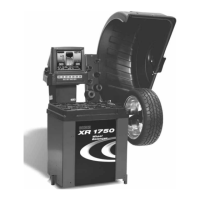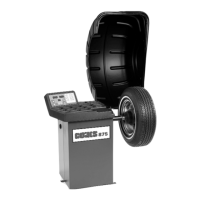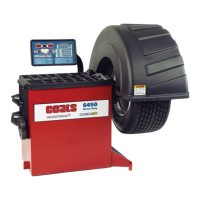READ these instructions before placing unit in
service. KEEP these and other materials delivered
with the unit in a binder near the machine for ease
of reference by supervisors and operators.
Safety Instructions
Set-up Instructions
Operation Instructions
Maintenance Instructions
See
ÌBalancing Your
First Tire
on page 3.
Model V200
Vero Series™ Wheel Balancer
1601 J. P. Hennessy Drive, LaVergne, TN USA 37086-3565 615/641-7533 800/688/6359 www.ammcoats.com Manual Part No.: 85608729 01
HENNESSY INDUSTRIES INC. Manufacturer of AMMCO
®
, COATS
®
and BADA
®
Automotive Service Equipment and Tools. Revision: 5/14



